Watching
Koalas
Guidelines for watching wild Koalas sustainably
We have been researching wild koalas since 1998. Over that time we have noticed that some human behaviour causes koalas to respond negatively, so we formulated this Sustainable Koala Watching Code.
We encourage everyone who sees a koala in the wild to respect the following guidelines:
1. Never touch the tree a koala is sitting in
Why? We have noticed that a resting koala will look up if their tree is touched, even when they are high and the tree is touched quite gently. We believe that the tree itself is that koala’s personal space for the day, and touching it is a form of trespass. Also, two of the koala’s few predators – man and goannas – would have climbed to reach a koala, so anything large touching their tree should provoke a reaction.
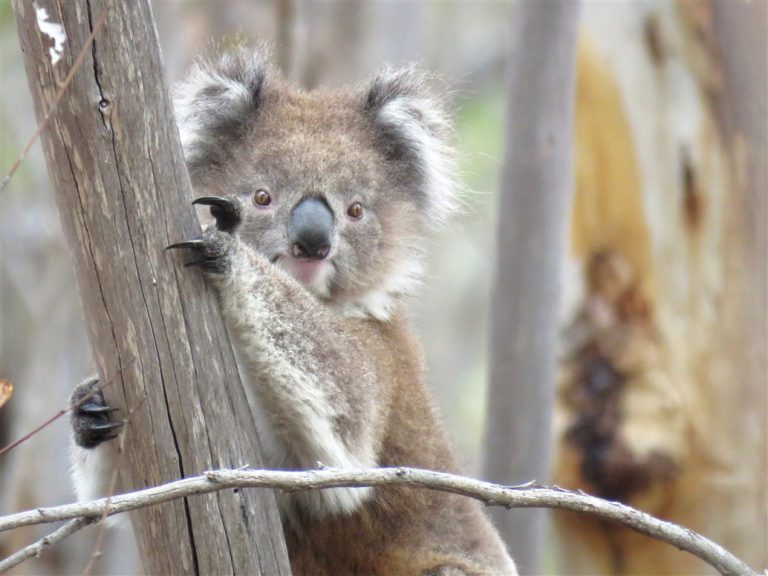
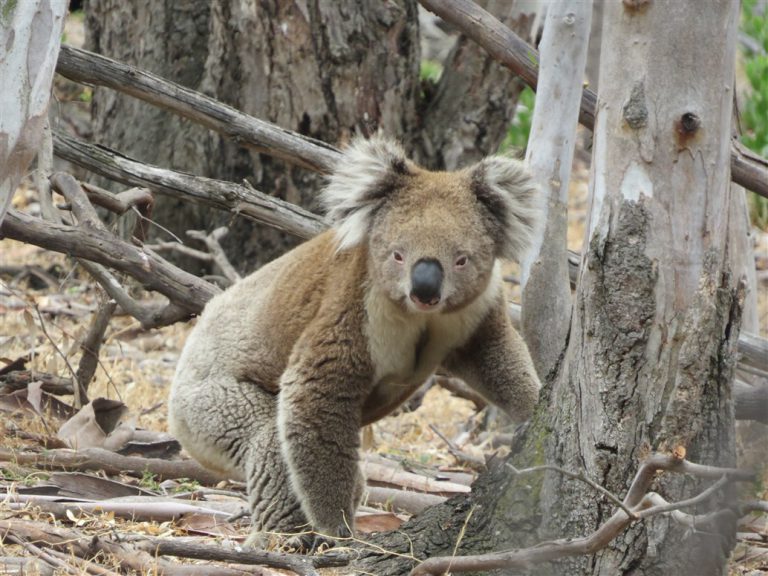
2. Maintain a distance of 10m (horizontal) from any wild koala
Why? Even without touching the tree, a wild koala can become distressed if humans approach too close. Unhabituated koalas often wake up, become very rigid and will sometimes climb higher when humans approach. So we have formulated this rule as a basic safe and respectful distance.
Interestingly, a 2014 scientific study (1) has found that captive koalas subjected to people at close proximity (5 metres) do experience higher levels of stress than when the people are further away. Wild koalas are likely to be even more sensitive, so our self-imposed 10 metre limit is justified.
3. Do not surround a koala’s tree
Why? Very nervous koalas will often move their body so the tree is between you and them. It may be a form of protection. If people are in all directions, the koala finds this very difficult to achieve. Less nervous koalas will still look in the direction of the humans on the ground, and if those humans are in all directions the koala keeps looking from side to side. For an animal on a low-energy diet, this vigilance is a waste of their precious resources.
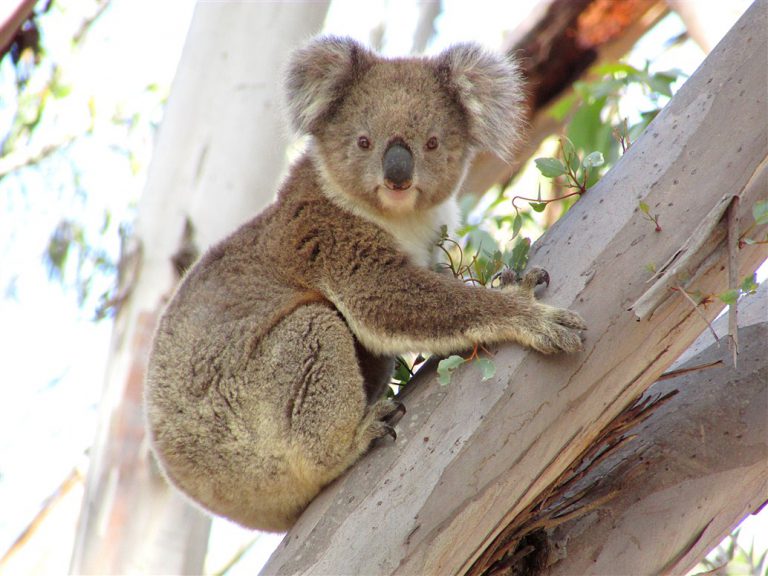
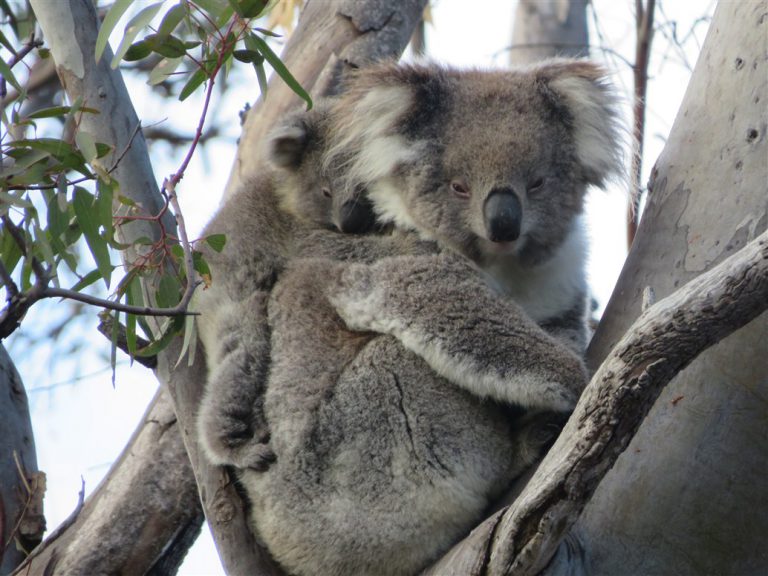
4. Avoid excessive movement or noise around wild koalas.
Why? As mentioned in the point above, a nervous koala will move their body away from a human. We have also noticed that if a large group of humans stays still in one location and one human walks to the other side of the tree, the koala will move away to avoid the moving human. It may be partly the noise – though in the case mentioned, the stationary humans continued to talk – or it may be the movement.
The same study mentioned earlier also tested captive koalas’ reaction to noise levels of humans, and found that increasing noise led to increased vigilance behaviour (stress) in the koalas.
5. Do not try to get the animal’s attention by making noises.
Why? This is so tempting, and people do it a lot. It may work, once or twice. But how many times has that happened to that koala? And each time it doesn’t work, does someone make a louder noise? Or shake the tree, or throw something at the “unco-operative” koala? This is totally unacceptable of course, but it starts with a small disturbance and builds.
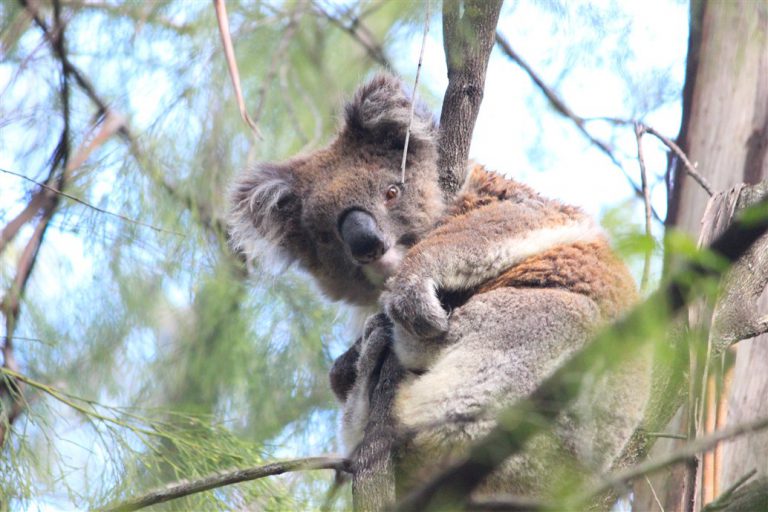
REFERENCES:
1 Megan J. Larsen, Sally L. Sherwen, Jean-Loup Rault, Number of nearby visitors and noise level affect vigilance in captive koalas, Applied Animal Behaviour Science, Volume 154, 2014, Pages 76-82, ISSN 0168-1591,
https://doi.org/10.1016/j.applanim.2014.02.005.
(https://www.sciencedirect.com/science/article/pii/S0168159114000537)
2 Edward J. Narayan, Koa Webster, Vere Nicolson, Al Mucci, Jean-Marc Hero, Non-invasive evaluation of physiological stress in an iconic Australian marsupial: The Koala (Phascolarctos cinereus),General and Comparative Endocrinology, Volume 187,2013, Pages 39-47, ISSN 0016-6480,
https://doi.org/10.1016/j.ygcen.2013.03.021.
(https://www.sciencedirect.com/science/article/pii/S0016648013001536)
All Echidna Walkabout wildlife tours and Koala Clancy Foundation events are conducted in compliance with this code.







